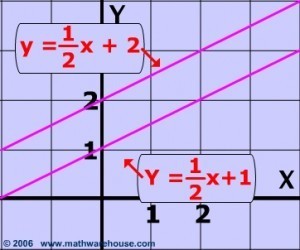Parallel Plot Lines – A Useful Technique!
 One technique I've noticed in many stories I've enjoyed is the use of parallel plotting. This consists of two or more main plot lines running independent of and parallel to each other in the story, and their convergence and resolution at the climax of the tale. As they develop they may be related and they may not, but by the end they will be inextricably intertwined.
One technique I've noticed in many stories I've enjoyed is the use of parallel plotting. This consists of two or more main plot lines running independent of and parallel to each other in the story, and their convergence and resolution at the climax of the tale. As they develop they may be related and they may not, but by the end they will be inextricably intertwined.
One example of this from a hit television series comes from the recently completed season of "Dexter". If you read this blog regularly, you know that "Dexter" is one of my favorite all-time shows, and I've got Showtime solely for watching this series. Seriously, I don't watch anything else on Showtime. Anyway, during this last season two of the main plot lines consisted of Dexter and Lumen trying to exact vengeance on the group of men responsible for torturing and killing a dozen women (Lumen was to be the thirteenth, but escaped with Dexter's unwitting help). The second plot line running parallel to this is Homicide Detective Debra Morgan, Dexter's sister, tracking down the same group of men through official channels while Dexter and Lumen work to avoid her detection of their involvement. A third plot line is the romance between Deb and Quinn, her partner in Homicide who suspects Dexter of dark things and has gone rogue undercover to try to prove it, risking his job and romance with Deb in the process.
You can see how all three plotlines are related to each other, although none of them intersect directly until the final episode. In a twelve episode season, there is enough time to develop all three plotlines fully and bring them to a satisfying conclusion. The writers and actors do an incredible job of just that, and this series always keeps me on the edge of my couch which is one of the reasons I love it.
Another example of this technique from a novel is in "Hush Money", by Robert B. Parker. The main character, Spenser, is a P.I. who is hired to investigate why a senior professor at a local university was denied tenure. He is also hired to simultaneously investigate who is stalking a friend of his girlfriend. They are two seemingly unrelated cases, but Mr. Parker's skill brings the two plotlines together very satisfyingly in the end.
The key to using this technique well is to alternate between them during the story, leaving the reader on edge each time you switch between one plot line and the other. It creates a pace where the reader is given mental breaks from each plot, and the stakes get raised with each event. There is room to use humor to break the tension, and if done well, the story flies by and gives the reader a terrifically exciting ride all the way to the end.
I'm using this technique in writing "Rubbed Out", the sequel to "Flesh Wound". There will be two parallel plot lines. The first focuses on Ae-Cha, the South Korean girl who gets sucked into the human sex trafficking trade and winds up in Los Angeles and San Francisco working in massage parlors. Max is hired by her cousin to find her and help her escape. The second plot line focuses on a character to be named by one of my readers (see my blog of December 6 for the details), who suffers a serious accident that results in his heart stopping and an out of body, near-death experience with which he is trying to cope. Part of his coping involves becoming a client of Faye, who has her hands full with the challenge of helping him. The two plot lines will come together and be resolved at the end of the story. My goal is to explore each plot line in enough depth to captivate the reader and bring them together satisfyingly at the end. I'm having a ball so far.
Well, I never got to the topic of website hits today, so I'll talk about that on Friday. You won't believe what the online traffic was during Christmas week!
Read something today that fills you with the nostalgia of the year ending! Thanks for reading. -Jon



